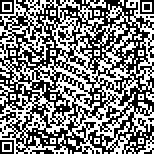周龙江,王苇,张新江,赵义,陈斌,李华东,刘斌,李澄.Bold-fMRI联合DTT技术在缺血性脑卒中患者上肢功能恢复磁共振研究中的应用[J].中华物理医学与康复杂志,2016,38(12):894-899
扫码阅读全文

|
| Bold-fMRI联合DTT技术在缺血性脑卒中患者上肢功能恢复磁共振研究中的应用 |
|
| |
| DOI: |
| 中文关键词: 脑卒中 功能磁共振成像 纤维束成像 功能重组 |
| 英文关键词: Stroke Functional magnetic resonance imaging Tractography Brain reorganization |
| 基金项目: |
|
| 摘要点击次数: 2312 |
| 全文下载次数: 3250 |
| 中文摘要: |
| 目的联合Bold-fMRI及DTT技术研究皮质脊髓束(CST)在不同损伤情况下脑皮质功能重组模式及其与偏瘫上肢运动功能恢复的关联性。 方法共选取15例初次发病的急性脑梗死伴单侧严重上肢瘫患者作为研究对象。于发病1周内对患者执行偏瘫侧手指被动伸展任务(FE)下fMRI及DTT联合成像,通过Dtv.Ⅱ.R2软件计算患侧及健侧CST条目数。并于发病后1个月及3个月时行偏瘫侧手指被动FE任务下fMRI成像,通过SPM8软件观察不同时程患者脑功能区激活情况。采用简化Fugl-Meyer评分(FMA)上肢部分对入选患者患侧上肢运动功能进行跟踪评定。 结果根据重建的患侧CST条目数与健侧CST条目数的比值分为3型,Ⅰ型患者患侧纤维束根数大于健侧2/3,Ⅱ型患者患侧纤维束根数大于健侧1/3但小于2/3,Ⅲ型患者患侧纤维束根数小于健侧1/3。I型患者Bold-fMRI初期显示双侧初级感觉运动区(SMC)及患侧为主辅助运动区(SMA)激活,1个月及3个月时健侧SMC区激活逐渐减弱,患侧SMC区激活强度逐渐增强。II型患者Bold-fMRI初期表现为患侧SMC区及SMA区激活,1个月时表现为以健侧为主双侧SMC区及SMA区明显激活,3个月时患者SMC区激活增强,患侧激活减弱。Ⅲ型患者Bold-fMRI初期表现为SMA区及后顶叶皮质区(PPC)轻度激活,1个月时健侧SM1区有轻度激活,3个月时双侧SMC区及SMA区均无激活。发病1周内Ⅰ型、Ⅱ型及Ⅲ型患者上肢FM评分分别为(5.6±4.3)分、(4.8±5.0)分及(6.5±4.5)分,组间差异均无统计学意义(P>0.05);发病1个月时Ⅰ型、Ⅱ型及Ⅲ型患者上肢FM评分分别为(48.5±5.6)分、(36.5±6.8)分及(12.3±3.4)分,组间差异均具有统计学意义(P<0.05);发病3个月时Ⅰ型与Ⅱ型患者上肢FM评分分别为(62.8±3.2)分、(60.2±5.2)分,组间差异均无统计学意义(P>0.05),但均显著高于Ⅲ型患者上肢FM评分[(10.2±6.0)分](P<0.05)。 结论不同CST损伤情况下脑皮质功能重组模式各异,颅内功能重组是一个动态过程,不同脑区激活模式与患者临床预后密切相关。 |
| 英文摘要: |
| Objective To explore the pattern of functional reorganization in the cortex after corticospinal tract (CST) injury and its relationship with the recovery of upper limb motor function. MethodsFifteen patients with complete paralysis on one side after acute cerebral infarction were studied. Within 1 week after the onset, functional magnetic resonance imaging (fMRI ) and diffusion tensor tractography (DTT) were performed in parallel with timed finger flexion and extension movements in all subjects. The number of nerve fibers in corticospinal tract (CST) in the affected and healthy sides was measured by using Dtv.Ⅱ.R2 software.One and three months later, fMRI was performed while the affected fingers were flexed and extended passively and any cortical activation was observed. In addition, Fugl-Meyer arm motor function scores were assessed one week, one month and three months after the stroke. ResultsAccording to the reconstructed nerve fiber number in CST on the affected side, the patients were classified into three types. Type I: the number of newly-built CST nerve fibers is more than 2/3 of that on the healthy side; type II: the ratio is between 1/3 and 2/3; and type III: the ratio is less than 1/3. For typeⅠpatients, blood oxygenation level-dependent fMRI (bold-fMRI) showed initial activation of the bilateral sensorimotor cortex (SMC) and the supplementary motor area (SMA) on the affected side. That was followed by a gradual decrease in the activity in the healthy SMC and an increase in the affected SMC at 1 and 3 months. Among the type II patients bold-fMRI indicated activation of the SMC and SMA on the affected side initially, significant activation of the bilateral SMC and SMA one month later and then stronger activation in the SMC on the healthy side and a weakening of activation in the SMC on the affected side. For type Ⅲ patients, initially the SMA and the posterior parietal cortex were found to be slightly activated. One month later SM1 on the unaffected side was slightly activated, and 3 months later neither the SMC nor the SMA on either side was activated. One week after the onset, the average upper extremity FM scores of the three types of subjects were not significantly different. After one month the three groups′ averages were all significantly different from one another. But after three months the averages for types I and II were again not significantly different, but significantly better than the average of the type III patients. ConclusionDifferent CST injuries induce different modes of cortical reorganization. The reorganization is a dynamic process, and different activation patterns are closely correlated with clinical prognosis. |
|
查看全文
查看/发表评论 下载PDF阅读器 |
| 关闭 |
|
|
|